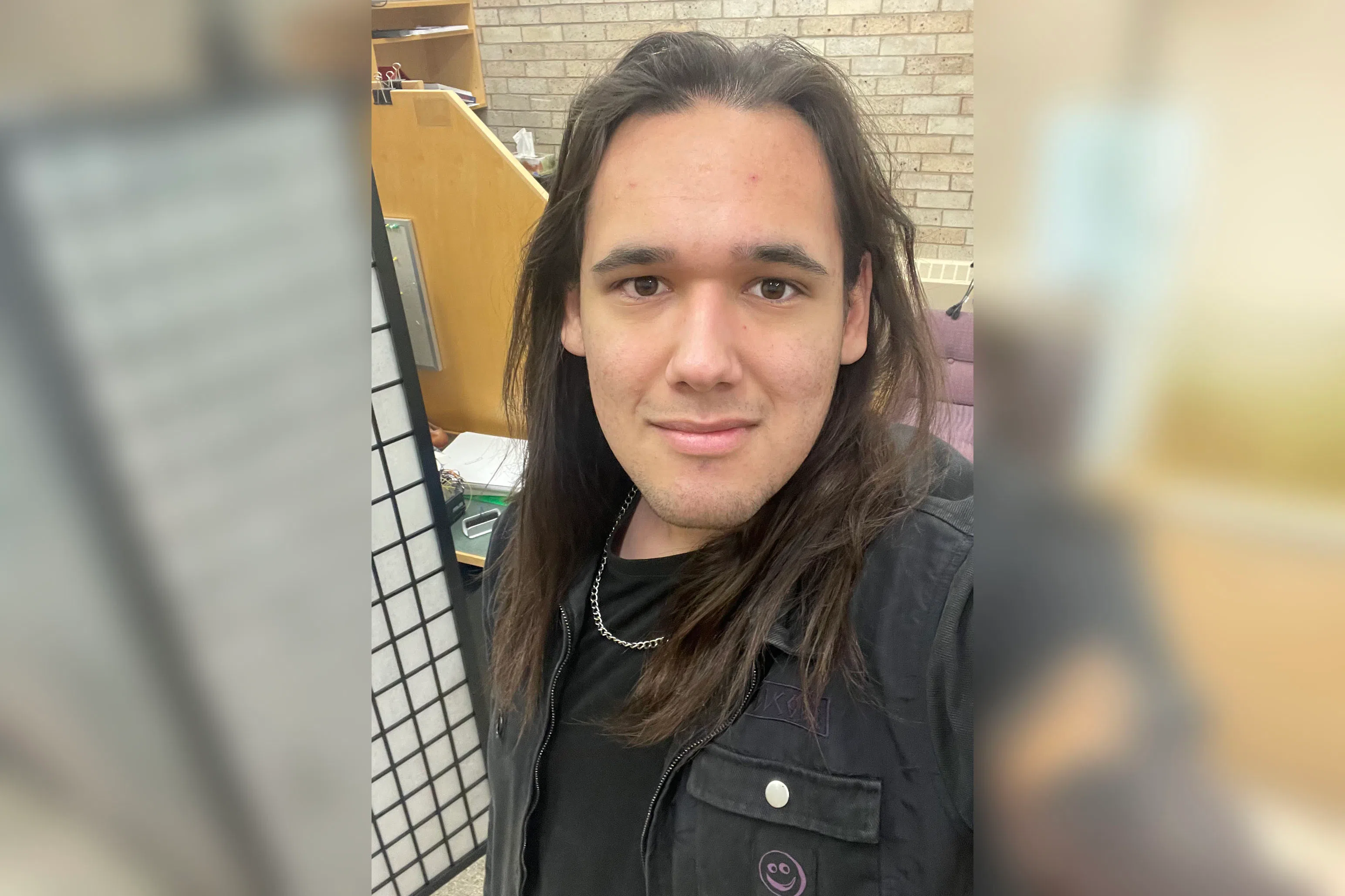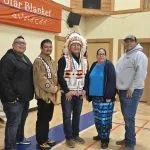
Hacking for Good: Bridging Culture and Tech for a Sustainable Future
The somewhat sinister concept of ‘hacking’ may be unclear to the general public. An intrusive crime of exploiting a computer system or personal information without authorized access. To some degree, we’re all scared of it – we buy security programs for our computers and encrypt our files in effort to stay safe from this vague, ominous threat.
Noah Merasty is throwing himself into the world of hacking, not to steal your banking information and baby photos, but to protect the data which needs to protecting.
“I’ve always been interested in this concept of hacking,” said Merasty. “So now, I’m learning how to hack, but doing it for good reasons.”
Merasty, a member of Flying Dust First Nation, is a second year Computer Science student at the University of Saskatchewan (U of S), specializing in cybersecurity and artificial intelligence (AI). His interest in hacking piqued when he started playing a video game, Cyberpunk 2077.
“In it, there are these characters called net-runners, that are basically hackers. It made me really interested in cybersecurity. So when I learned the U of S had a cybersecurity club, I joined it as soon as I was able.”
Merasty explains that in the hacking world, there are three general types of hackers: ‘black hat hackers’, the cybercriminals; ‘grey hat hackers’, which may break the law but without malicious intent; and ‘white hat hackers’, security experts who use ethical hacking to identify and fix vulnerabilities in systems. The latter is what Merasty and the Cybersecurity Club practice.
“It’s all educational. I still just know the basics but I’m learning a lot about it,” said Merasty, who is modest about his knowledge and abilities – he made his own tool to monitor wifi activity in his house, but swears it’s simple.
“I’m good at things like breaking encryptions. I know how to do a few things well, but nothing really dangerous.”
This desire to push himself academically is partly hereditary – he said his mother, who is currently a PhD student in Public Policy and Indigenous Governance, is a major source of inspiration. His entire family, in fact, has been a motivator in education.”
“I’ve always been the kid who got good grades,” he said. “My parents always told me, if you’re going to do something well, make sure it’s school. I’m discovering just how important getting a good education is.”
Merasty said his mosom was a civil engineer and his kohkom played a role in helping found the Saskatchewan Indian Federated College (now the First Nations University of Canada).
But Merasty finds that in his particular academic discipline, there are few similar faces around.
“When I walk into a computer science class, often I’m the only Indigenous person there,” he said. “In some ways it’s disappointing. But I try to look at it as an inspiration for me to do my best and lead by example. There’s so many Indigenous people who would be great in computer science but there’s a lot of barriers there.”
In his pursuit to lead by example, Merasty has already hit a major academic milestone. Following a school project in which Merasty was to interview someone in his field, he was invited by Dr. Julita Vassileva to help her conduct research in her lab over the summer. The result is a soon-to-be published research paper on a component of AI called ‘federated learning’.
Merasty said they worked on a comprehensive categorization of all known major attack vulnerabilities and defences for federated learning.
“I’m 19 now but I was 18 at the time and realized I helped with a research paper that’s going to be published. My mom always jokes that I’m going to be published before her.”
Not only are Merasty’s academic accomplishments beyond his years, but as are his insights into where this passion for technology and development stem from.
“When you think of computer science, you don’t think of a lot of connections with Indigenous people. But what I have realized is that Indigenous people have always been people to adopt new technology as quick as we can, and learn how to use it to the fullest extent,” he said.
“For a while we were outpacing the government in our ability to use firearms because we’re always people to embrace new technology.”
In keeping with this connection to his culture, Merasty said one of his career ambitions is to make AI more environmentally friendly. AI data centres require large amounts of water to cool their servers, with estimates that every 10 to 50 ChatGPT responses use the equivalent of a bottle of water. Additionally, AI uses a lot of electricity, which is often generated by burning fossil fuels. Goldman Sachs predicts that AI power demand could increase by 160% by the end of the decade.
As such, Merasty would like to help find a way to make AI more environmentally healthy.
“I want to honour these values of being a steward of the land, but also helping AI be a useful tool for humanity,” he said.
Despite his big ideas and early success, Merasty is nowhere near being done with school. He plans to pursue a PhD at one of the top tech schools in North America. In doing so, he hopes to open the door to more people like him finding a career in computer science.
“If more of us aim high, more of us would be hitting high places,” he said. “I think have more of our unique worldview out there would be beneficial to everyone.”

